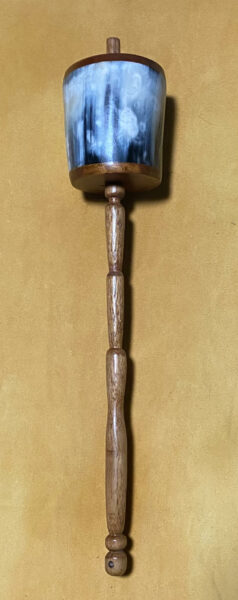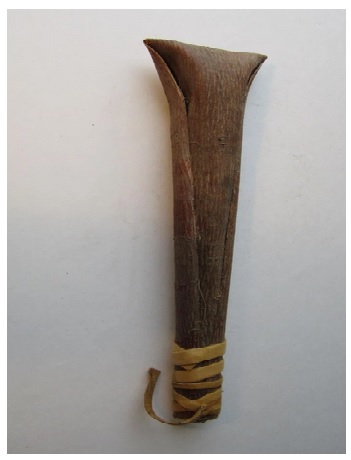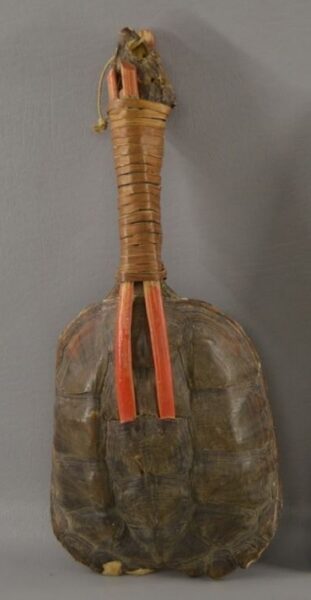Gourd Rattle

Gourd rattles are typically made from a dried and hollowed-out gourd, with small objects such as pebbles, seeds, or beads placed inside. A handle is attached to the gourd, often made from wood, and a decorative handle wrap or tassel is sometimes added. They are used in a variety of ways, including in traditional social dances and ceremonies, as well as in healing rituals. They are played by shaking the rattle in time with the music, creating a percussive sound that adds to the overall rhythm of the song or dance.
Horn Rattle

Horn rattles are similar in function to gourd rattles. However, instead of a dried gourd, the resonating chamber of a horn rattle is made from a hollowed-out cow or bison horn.
A handle is attached to the end of the horn, often made from wood or bone. The interior of the horn is filled with small objects such as pebbles, seeds, or beads, which rattle around inside when the rattle is shaken.
Horn rattles are used in a variety of traditional social dances and ceremonies. They are played by shaking the rattle in time with the music, adding a percussive element to the rhythm of the dance.
Bark Rattle

Elm bark rattles are made from the inner bark of the American elm tree, which is soaked and then formed into a cylindrical shape. A handle, often made from wood, bone, or corncob is attached to the end of the rattle.
The interior of the elm bark rattle is filled with small objects, such as pebbles, seeds, or beads, which create a rattling sound when the rattle is shaken.
Elm bark rattles are used in a variety of traditional social dances and ceremonies.
They are played by shaking the rattle in time with the music, adding a percussive element to the rhythm of the dance.
Turtle Rattle

As their name suggests, turtle shell rattles are made from the shells of turtles, which are cleaned, dried, and then filled with small objects such as pebbles, seeds, or beads. The neck and head of the turtle form the handle.
Turtle shell rattles are used in a variety of traditional social dances and ceremonies. They are played by shaking the rattle.
The use of turtle shell rattles is deeply rooted in Iroquois culture and traditions, and they are considered to be sacred objects.
